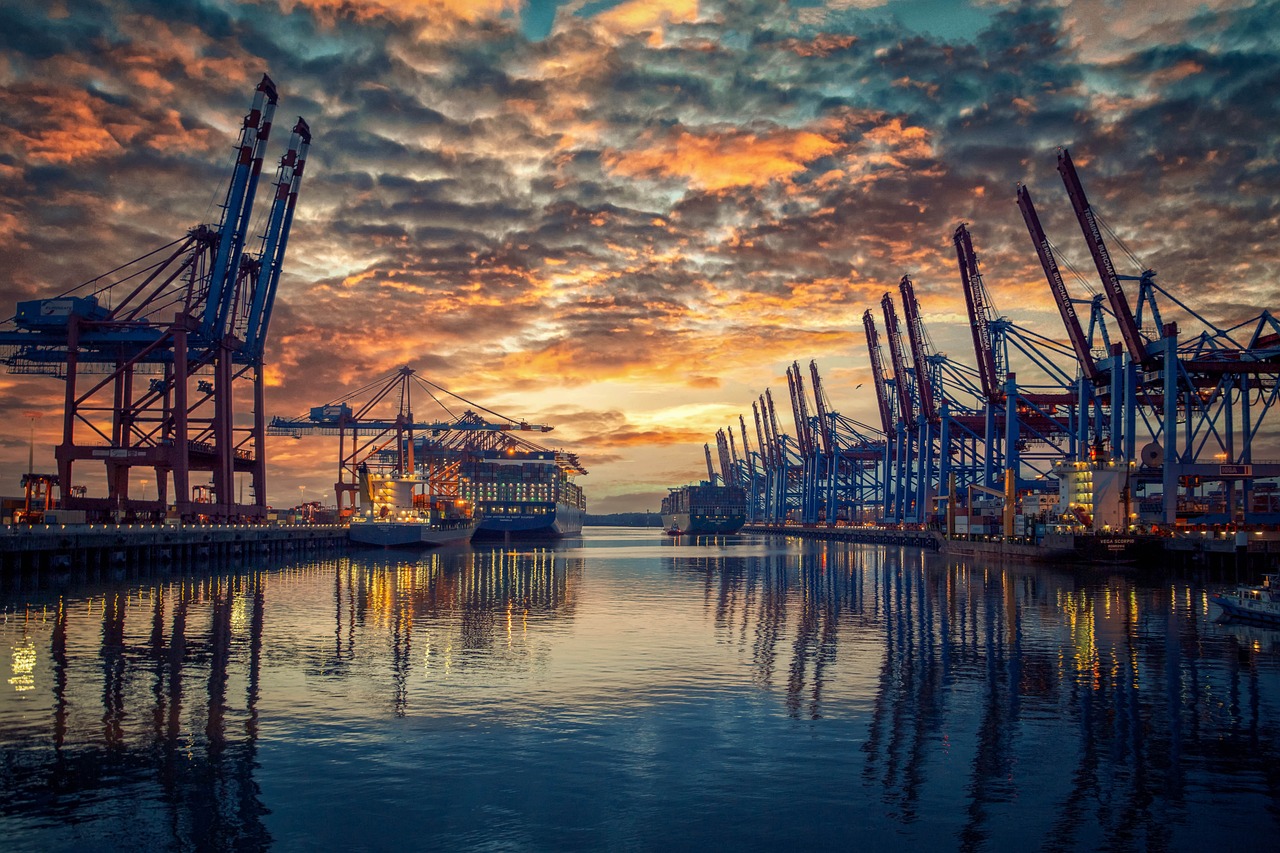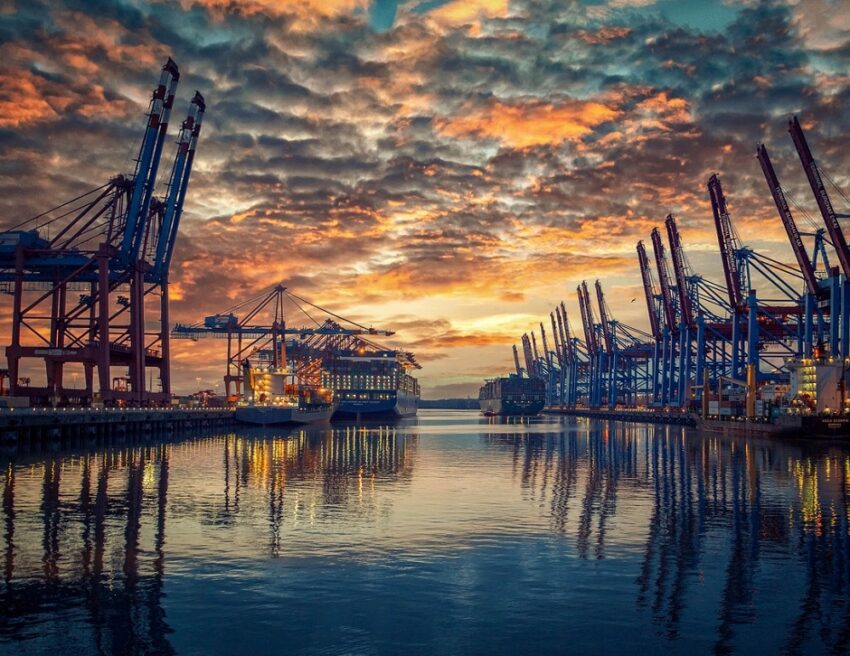In the dynamic realm of shipping and logistics, constant change is the only certainty. The past four years have been marked by significant shifts, from the challenges posed by the Covid pandemic to the subsequent economic recovery and supply chain crisis. These events have not only exposed the vulnerability of the global supply chain to disruptions but have also spurred innovation. As we welcome the new year, we are going highlight six key trends that are poised to influence the independent freight forwarders in the coming year and beyond.

Logistics industry trends independent freight forwarders should be aware of
More Capacity, Greater Volatility in Demand
The independent freight forwarders currently grapples with a challenging juxtaposition of declining demand for freight and a simultaneous surge in capacity. According to estimates from the international shipping association, BIMCO, global container volumes are expected to witness a modest increase of just 3% to 4% in 2024. In parallel, the global ocean fleet is poised to grow by a substantial 7.8%, reaching an unprecedented 2.7 million TEU.
This disparity is mirrored in the air freight forwarding sector, where capacity expanded by up to 9% in 2023, even as demand for air freight remains lukewarm.
For independent freight forwarders, this scenario ushers in a new era of heightened competition. With customer loyalty potentially wavering, freight forwarders must intensify efforts to set themselves apart in the market. This could involve a strategic focus on customer service excellence and the provision of value-adding services. Operational efficiency will be paramount in maximizing profitability amid these challenging conditions. Simultaneously, rates are expected to face continued impact as carriers vie for a diminished pool of cargo.
In essence, the industry is at a crossroads where adaptability, differentiation, and operational excellence will be key drivers for independent freight forwarders seeking to thrive in an environment marked by increased capacity and demand volatility.
The Digital Revolution in Shipping: From Talk to Tangible Reality
After years of being on the horizon, digitalization in the shipping industry is set to become a tangible reality for many shippers by the next year. The catalyst for this transformation has been the impact of the Covid pandemic and the widespread shift to remote work, compelling the shipping and logistics sector to embrace digitalization. Notably, major players such as Maersk, MSC, Hapag-Lloyd, and others have led the way by digitizing their operations. What is particularly remarkable is that boutique shipping companies have also undergone digitalization, often implementing their own software systems and tools for customers.
The integration of artificial intelligence (AI) and blockchain technology holds the potential to further revolutionize and automate the world of shipping. Anticipated developments in these areas are expected to enhance real-time shipment tracking and supply chain visibility, building upon the existing software infrastructure already deployed in the industry.
A significant stride toward digitalization is the adoption of paperless shipping. Freight forwarders, exemplified by MTS Logistics, have achieved a 100% paperless status as of 2023. This trend is gaining momentum as digital platforms play an increasingly central role in shaping the future of shipping. The industry’s embrace of digital technologies not only streamlines processes but also sets the stage for a more connected, efficient, and technologically advanced shipping landscape in the near future.
Climate Change and Geopolitical Tensions Take Center Stage
While in 2023 the major point of concern for the transportation and logistics industry were the black swan events, this year the sector could be possibly disrupted by more pervasive forces of wars and climate change. Geopolitical changes and changes in climate patterns could potentially disrupt the supply of resources, cut transportation routes, mess with the manufacturing process and lead to cost hike across the industry.
In this complicated scenario, independent freight forwarders find themselves compelled to prioritize agility, flexibility, and visibility. The ability to anticipate challenges and swiftly navigate disruptions in the supply chain becomes extremely important. Proactive measures that enhance adaptability and resilience will be crucial for freight forwarders to successfully traverse the complex intersection of climate change impacts and geopolitical uncertainties in the year ahead.
Evolution toward Sustainability
While sustainability and green logistics have been topics of discussion for years, the shipping and logistics industry is now taking bold steps, compelled by the increasing frequency and economic impact of natural disasters in a changing climate. Notably, global shipping regulators, including the International Maritime Organization with its “IMO 2020” rule, have implemented regulations mandating cleaner fuel and the retrofitting of emissions scrubbers on older vessels. As a result, anticipated announcements of more bold actions are likely to follow by 2024.
The industry faces enduring challenges such as water shortages, exemplified by the low water levels experienced in the Panama Canal and prolonged droughts in the western United States. Climate-related events are forcing ports worldwide to periodically suspend operations.
In response, the private logistics sector has initiated efforts to promote zero-carbon shipping by 2050, with leaders like Maersk spearheading such initiatives. The construction of new ships is increasingly considering electricity and alternative fuel sources. However, the journey toward a completely green logistics sector is acknowledged to be a gradual process, and the industry is committed to ongoing efforts to achieve sustainability objectives in the face of environmental challenges.
Accelerating Consolidation Trends in the Freight Forwarding Sector”
The mergers and acquisitions landscape within the freight forwarding sector has experienced heightened activity since the onset of the pandemic, and the momentum shows no signs of abating in 2024. Fueled by a succession of acquisitions within the industry, industry observers, notably The Loadstar, predict that this year will be characterized as ‘a year of consolidation.’
In an environment marked by market challenges, the trend toward consolidation among smaller independent forwarders is expected to reach unprecedented levels. On one hand, enterprises lacking a distinct niche may face difficulties catching up with their larger, more successful counterparts, and they may find themselves constrained in funds for crucial investments. On the other hand, larger forwarders are poised to capitalize on the market conditions, seizing opportunities to acquire competitors and their valuable accounts. This strategic consolidation is anticipated to reshape the competitive landscape within the freight forwarding sector in the coming year.
More Focus on Cybersecurity Amid Digitization Surge in Shipping and Logistics”
In the evolving landscape of digitization within the shipping and logistics realm, cybersecurity is emerging as a paramount concern. Anticipated trends suggest that the broader shipping industry and its affiliated partners will undergo significant investments in cybersecurity in the coming year. Following the lead of the United States, which has prioritized cybersecurity in government operations, the private sector, including shipping, is poised to follow suit on a large scale. This strategic shift is fueled by the migration of more sensitive data to the cloud and the recognition that cyber risks have escalated significantly since the Covid pandemic.
The industry’s heavy investment in cybersecurity is geared towards protecting sensitive data, fortifying cargo against theft, and preventing cyberattacks that pose threats to seamless operations. The adoption of multifactor authentication is projected to become the standard in shipping and logistics, aligning with the practices observed in other industries.
Drawing from extensive experience as a shipping professional, the anticipation is that 2024 will witness substantial investments and a heightened focus on the future across key domains, including digitalization, sustainability, last-mile delivery, supply chain resilience, and cybersecurity. Concurrently, the global economy is expected to present new challenges for the shipping and logistics industry, prompting a comprehensive and forward-thinking approach to address emerging complexities.


